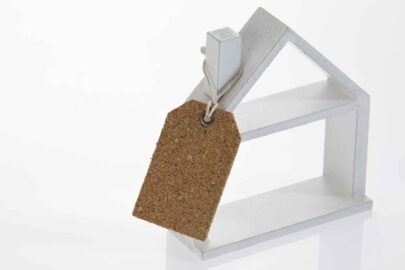The latest house price index from LSL Property Services and Acadata has found that the rate of annual growth in England and Wales has fallen consistently since August.
It now stands at just 0.9%, well below the rate of inflation, and the lowest since April 2012.
It leaves the average price in November in England and Wales at £305,522, up £2,724 on the same time last year.
Despite weak price growth, transaction levels rose slightly in November, up 2.5% on a seasonally adjusted basis. With an estimated 82,500 sales, they are at their highest for the month in three years.
In the year to September, while the number of loans for first time buyers was up marginally (0.4%) on the same period last year, the number for home movers is down 3.6%.
In addition, the number of buy-to-let mortgages is down 13.0%. The report said is could be an indication that a ‘wait and see’ attitude is now being adopted particularly as the end of the year approaches and the nation waits to see what happens with Brexit.
Longer-term issues also play a role, however, and affordability remains a key concern. The biggest growth in transactions has been in the cheapest region in England, the North East, with transactions in the three months to October up 7% on the same period last year. By contrast, the South East (the most expensive area outside London) saw transactions fall 4%. The capital bucks the trend, with sales up 2%, but it also saw price falls earlier than other regions.
Oliver Blake, managing director of Your Move and Reeds Rains estate agents, said: “Despite the current economic uncertainty it’s encouraging to see that there is still some increase in transaction levels and that, whilst house price growth is relatively flat, it means for first time buyers, for example, the news remains positive.”
The top three regions for price growth remain unchanged this month. The West Midlands still leads the way with annual growth of 3.7%, supported by strong performance in the West Midlands combined authority, which includes Birmingham. With price up 5.3% annually it’s among 13 areas to set a new peak in the month.
Neighbouring East Midlands, meanwhile, is also growing strongly, up 3.5% annually. Rutland has seen growth of 10.8% over 12 months, while Derby (up 6.1% annually), Leicester (5.7%), Nottinghamshire (3.9%) and Nottingham (2.0%) all set new peak average prices.
Despite the performance of Rutland and others in the Midlands, it is Torfaen in Wales that has had the highest growth in prices over the last year, however, up 15.6% annually. That is helped by the recent sale of the highest priced property in the area this year, for £620,000 in an area where the average property costs just £171,708. It’s also supported by demand for properties from those working in the Bristol and Gloucestershire areas.
More generally, Wales also continues to be the only area outside the Midlands that is (just) outpacing inflation (2.2% in October), with prices up 2.7% annually.
As well as Torfaen, it has seen strong growth in Caerphilly (up 8.8% annually), Carmarthenshire (7.2%) and Powys (6.4%), all of which set new peak average prices. The big cities of Newport (up 6.2%) and Swansea (up 3.7%) also show above average growth for the region, although Cardiff prices are only up 2.2% annually.
At the other end of the scale, prices in the East of England are now down on an annual basis for the first time since March 2012. While Southend-on-Sea and Thurrock still show good growth (4.1% annually for both, with the latter recording a new peak), that’s more than offset by falls in Suffolk (down 0.8%), Luton (down 1.0%), Bedfordshire (1.3%) and, most significantly, Cambridgeshire (with prices down 4.6%).
It is, however, the only region to see prices falling on an annual basis, and the majority of unitary authorities continue to see growth, with prices up in 74 of the 108 of them in England and Wales outside London.
